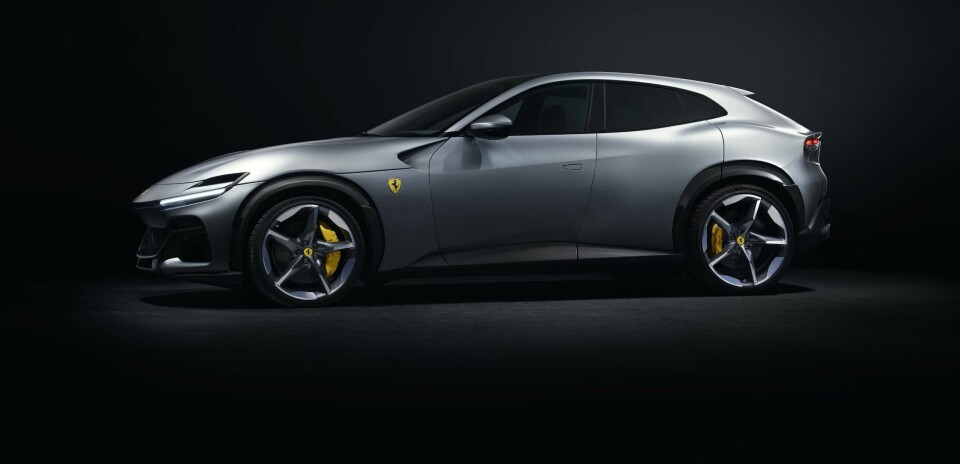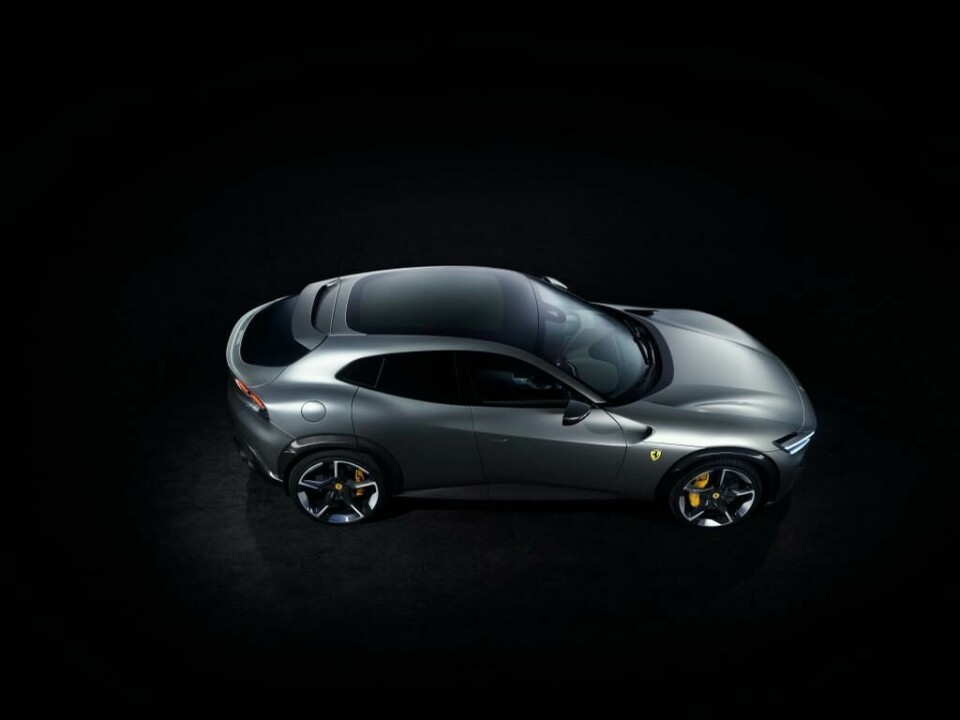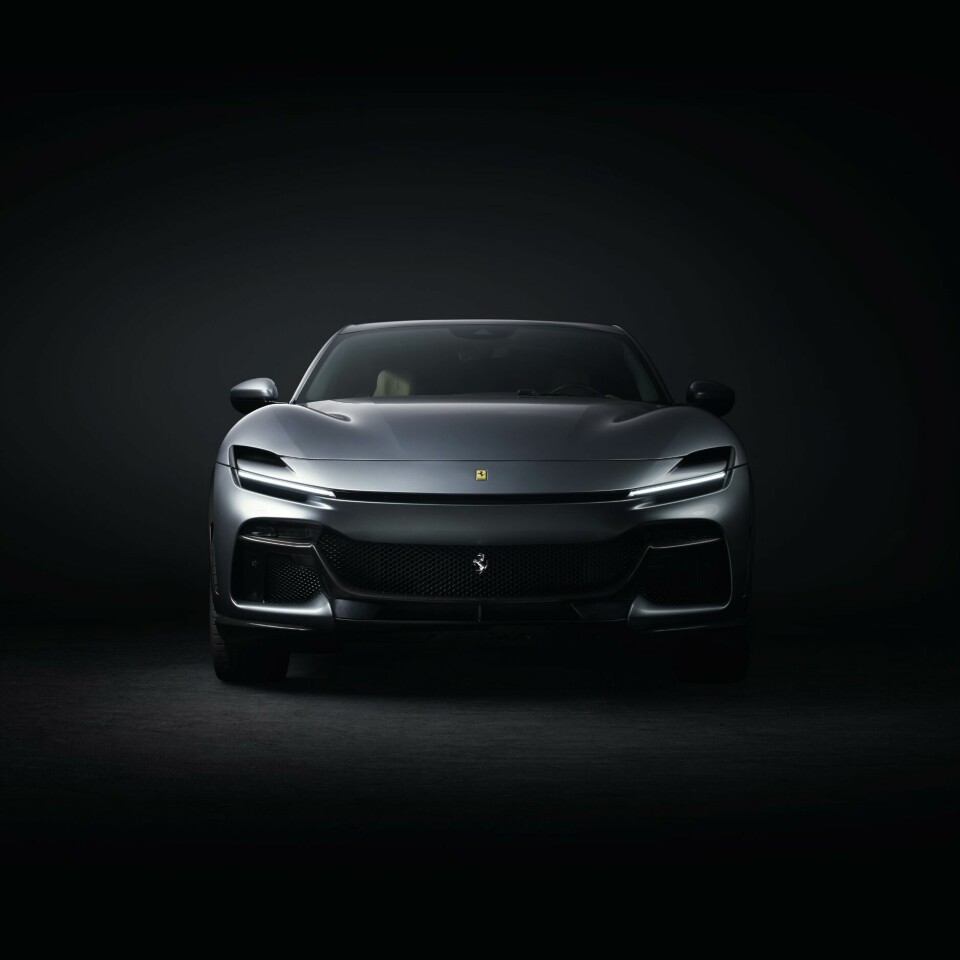
Rising to the challenge of a new type of Ferrari
Ferrari has entered a new segment with the Purosangue, but how big a challenge was its design for Flavio Manzoni and his team?
Ferrari has entered the SUV market, but don’t call the new Purosangue an SUV — it’s a sports car says the Maranello marque. Confused? In order to get a better idea of what it actually is, we spoke to chief design officer, Flavio Manzoni, who firstly explained what it is and what it isn’t.
“We didn’t want to make an SUV or a car that belongs to any particular category,” he says. Initially, the team looked at what the vehicle needs to be; it has to provide Ferrari performance and dynamics, a raised ride height and reasonable luggage space, but crucially it also has to offer proper space for two adults in the rear seats and easy accessibility. These are not the problems Ferrari usually has to consider, but back in 2015 the team set to work.

“This was a fantastic challenge for us because the idea of conceiving a Ferrari that never existed before was really strong,” says Manzoni. The question was how to find the perfect balance or the perfect proportion, and that’s why we spent so much time at the beginning in order to identify the architecture of the car.”
That required spending lots of time initially with the engineering team, but then the design work really got underway. But did the team use a defined approach to the design, something that makes a car typically Ferrari?
The idea was to try to detach two parts of the car, giving the feeling of a floating aerodynamic object
“Ferrari never uses the typical features that are belonging to the so called family strategy,” he says. “We don’t sit around a table in order to define the design criteria of all our cars, but we know that we have a certain vocabulary, a lexicon that belongs to the brand and fortunately this is a lexicon which is so broad that it gives us the possibility to make different interpretations and experimentations.”
That lexicon needed to be slightly re-written for the Purosangue in order to ensure that when it drives through the hallowed gates of the Maranello factory, it immediately displays the characteristics of a Ferrari. Manzoni says that this provided an exciting opportunity to create something new, but at the same time it was a challenge.
“The question was how to create a very agile, nimble effect despite the volume of the car,” he says. “The plan at the beginning was to treat the volume as a very sporty berlinetta, but how could we do that? The idea was to try to detach two parts of the car, one the body, the other one the underbody, giving the body colour part of the car the feeling of a floating aerodynamic object.”
This separation allows for some of the vital aerodynamic elements to be visually separated, a common design theme and one which is even more important for a performance brand like Ferrari. “If you look at the Daytona SP3, you can see the same; the body is very sculptural, very nimble and dynamic, but there is a clear separation by the technical paths that belong to the underbody,” he says. “Then we wanted to create in black or carbon fibre, a certain interplay between volumes. The idea was to use this carbon fibre technical base as a part that can collect all the technical devices that are necessary for the aerodynamics.”
The objective was to make the biggest interior in Ferrari history
There’s a familiarity to the language of performance cars here and to Ferrari models such as the FF and GTC4Lusso, but the Purosangue is something different, especially when it comes to the dimensions the body conveys and what is within it.
“We wanted to make the car appear much lighter, visually lighter, despite the additional height that was necessary,” he says. “Not only the height, but also the dimensions of the cabin that were necessary to welcome four people on board.”
Welcome is a key word here, because the idea was to approach both the interior design and the way occupants access the interior a little differently.
“The objective was to make the biggest interior in Ferrari history, but at the same time to make it not visible from the outside and this probably was one of the most difficult parts of this work,” says Manzoni. “We wanted to create a greenhouse that doesn’t visually show the space inside, but as soon as you open the four ‘welcome doors’ as we call them, you get surprised by the space inside, a kind of wow effect. This is what we wanted to achieve.”
The interior is a combination of performance and luxury, but Manzoni says they didn’t want to go to far towards the luxury side of things, or as he says, making it too “posh”. Instead, there are some links to traditional elements and consistency with design from other models.
We have four seats that are similar in order to have the same feeling as a passenger or as a driver
The instrument panel is similar to that in the Roma GT car and the SF90 hypercar, giving the front seat passenger a feeling of what Manzoni refers to as being a co-pilot. There are sculptural elements, as well as the integration of technology, with a new digital interface system.
That sense of being involved in the drive carries through to the rear seats too where the interior design team wanted to provide comfort without being too lounge-like.
“We wanted all the passengers to have the same experience as the driver,” says Manzoni. “How can you do that if you have a sofa on the rear? We have four seats that are similar in order to have the same feeling that you are part of the experience as a passenger or as a driver.”

Ferrari offers a full bespoke offering to clients when it comes to material choices, but there are sustainable options and the Purosangue also debuts a new carbon fibre trim that features metallic copper elements. Manzoni says this adds to the feeling of sophistication while remaining true to his notion of maintaining purity. There is also a new partially-recycled version of Alcantara available, which Car Design News recently saw first hand at the supplier’s factory.
The overall appearance of both the exterior and interior display typical Ferrari traits interpreted for a very different type of sports car, but what is Manzoni’s favourite element of the design? “I would say the aerodynamic treatment of the body. This is something that only Ferrari could do,” he says, adding that the flying bridge on the front fender is also something that he views as being very special.
There are of course those who will always judge Ferrari for entering this segment and will view the Purosangue as something almost traitorous, but the success of rivals such as the Porsche Cayenne, Lamborghini Urus and Bentley Bentayga show design characteristics can morph into something new. Manzoni and his team faced a tremendous challenge with the Purosangue, but they are confident that it is in every way, a Ferrari. Just don’t call it an SUV.












